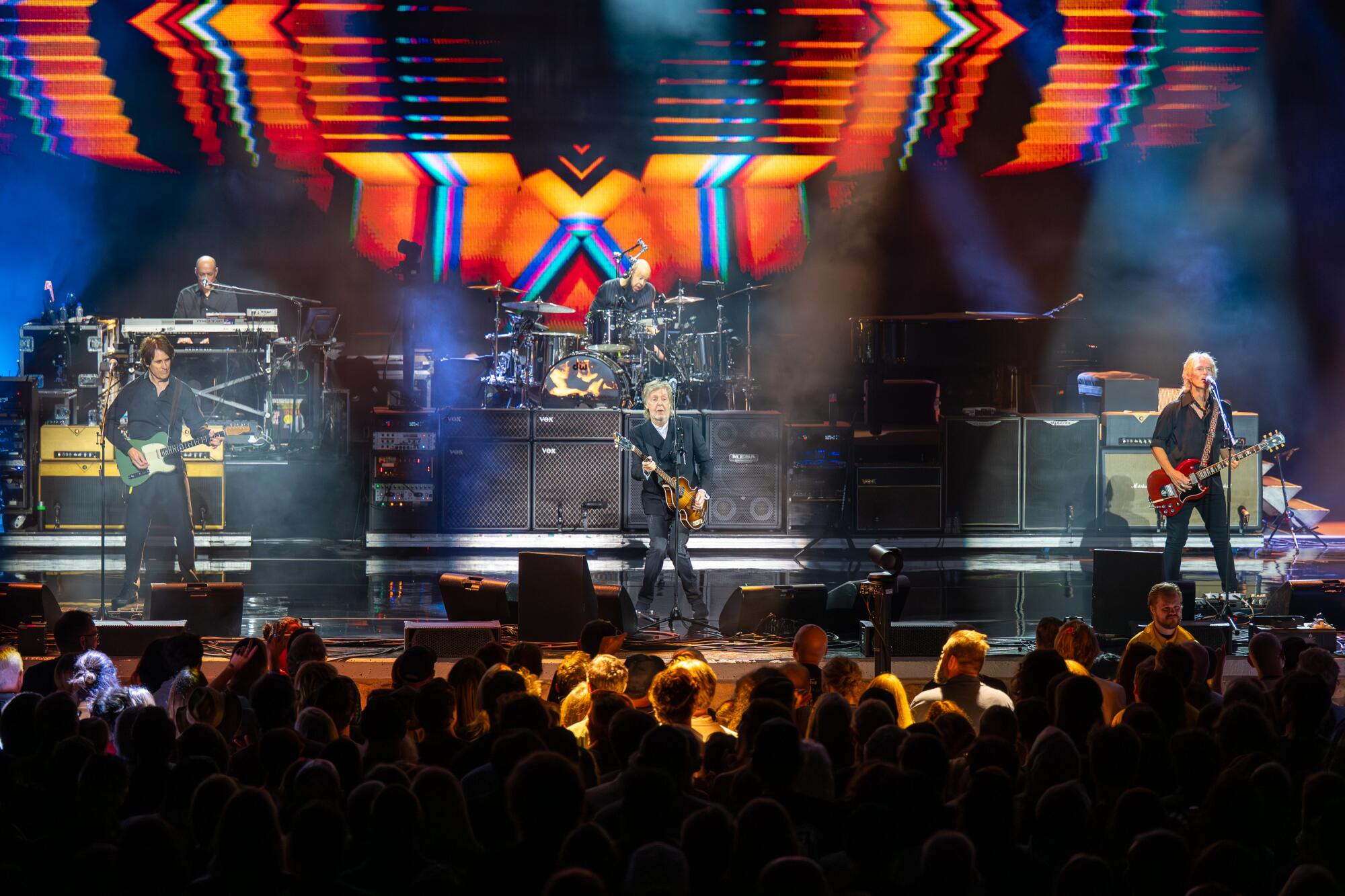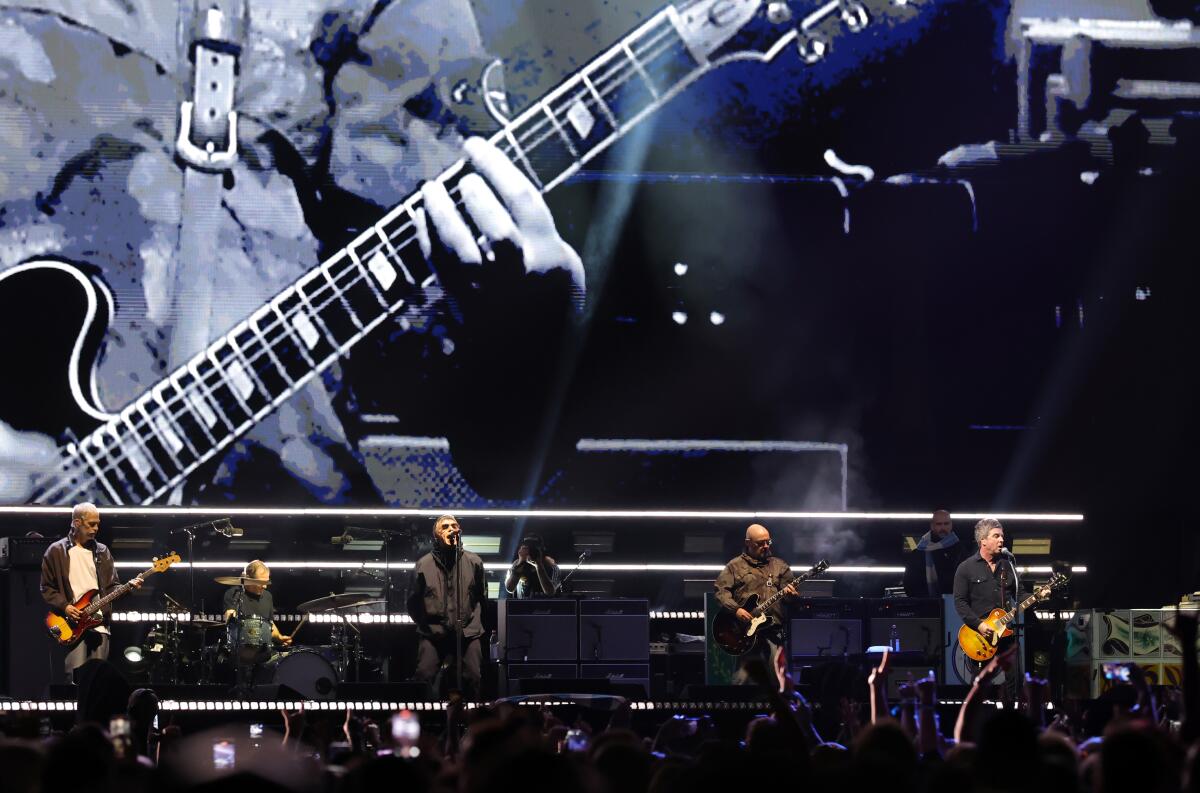Paul McCartney warms up before getting back in Santa Barbara
SANTA BARBARA — “In this next song,” said Paul McCartney, “we’d like you to sing along.”
Oh, this was the one?
By an hour or so into his concert Friday night at the Santa Barbara Bowl — basically somebody’s backyard by the standards of the former Beatle — McCartney had already gotten the capacity crowd to join in on a bunch of all-timers including “I’ve Just Seen a Face,” “Love Me Do,” “Jet,” “Getting Better,” “Lady Madonna,” “Let Me Roll It” and “Got to Get You Into My Life.”
But for Sir Paul, even (or especially) at age 83, there’s always a way to take an audience higher.
So as his keyboard player plunked out the song’s lovably lopsided lick, McCartney and his band cranked through a fast and jumpy rendition of “Ob-La-Di, Ob-La-Da” that left nobody any choice but to hop up and holler about the sweet certainty of life’s going on.
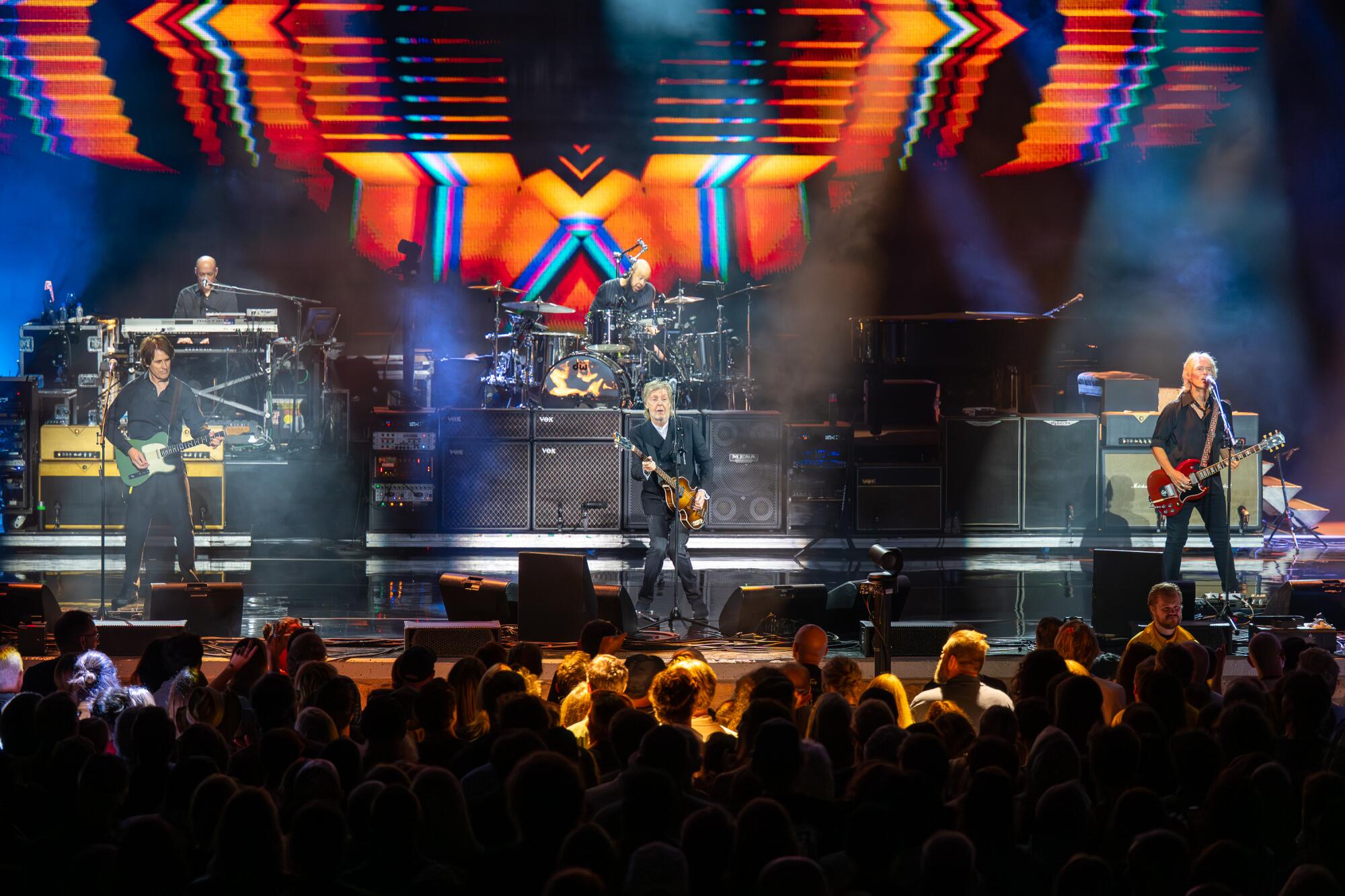
Paul McCartney and his band.
(Michael Owen Baker / For The Times)
A sellout pretty much as soon as it was announced, Friday’s show was a kind of warm-up gig ahead of the launch next week of the latest leg of McCartney’s Got Back world tour, which began criss-crossing the globe in 2022 and will resume Monday night in Palm Desert after a nine-month break.
On the road he’s playing arenas and stadiums, but this hillside amphitheater seats only 4,500 or so; to make the evening even more intimate, fans had to lock their phones in little pouches on the way into the venue. (The presence of several cameras swooping around on cranes suggested that McCartney was filming the concert for some unstated purpose.)
“That’s our wardrobe change of the evening,” he said at one point after taking off his jacket, and indeed this was a slightly trimmed-down version of the flashy multimedia production that he brought to SoFi Stadium three years ago. That night in 2022, he played three dozen tunes over two and a half hours; on Friday he did a dozen fewer — no “Maybe I’m Amazed,” no “Band on the Run” — in about an hour and 45 minutes.
The advantage of the smallness, of course, was that you could really hear what McCartney and his longtime backup band were doing up there: the folky campfire vocal harmonies in “I’ve Just Seen a Face,” the propulsive groove driving “Get Back,” the barely organized chaos of a downright raunchy “Helter Skelter.”
Then again, that assumes that tracking those details is why anybody turned up in Santa Barbara.
Though he dropped an album of new solo songs in 2020, McCartney has been pretty deep in nostalgia mode since the 2021 release of Peter Jackson’s widely adored “Get Back” docuseries. He’ll tend the machine this fall with a new book about his years with Wings and an expanded edition of the Beatles’ mid-’90s “Anthology” series; next year, a documentary about the Wings era is due from director Morgan Neville; in 2028, director Sam Mendes will unveil the four separate biopics he’s making about each Beatle, with Paul Mescal in the role of McCartney.
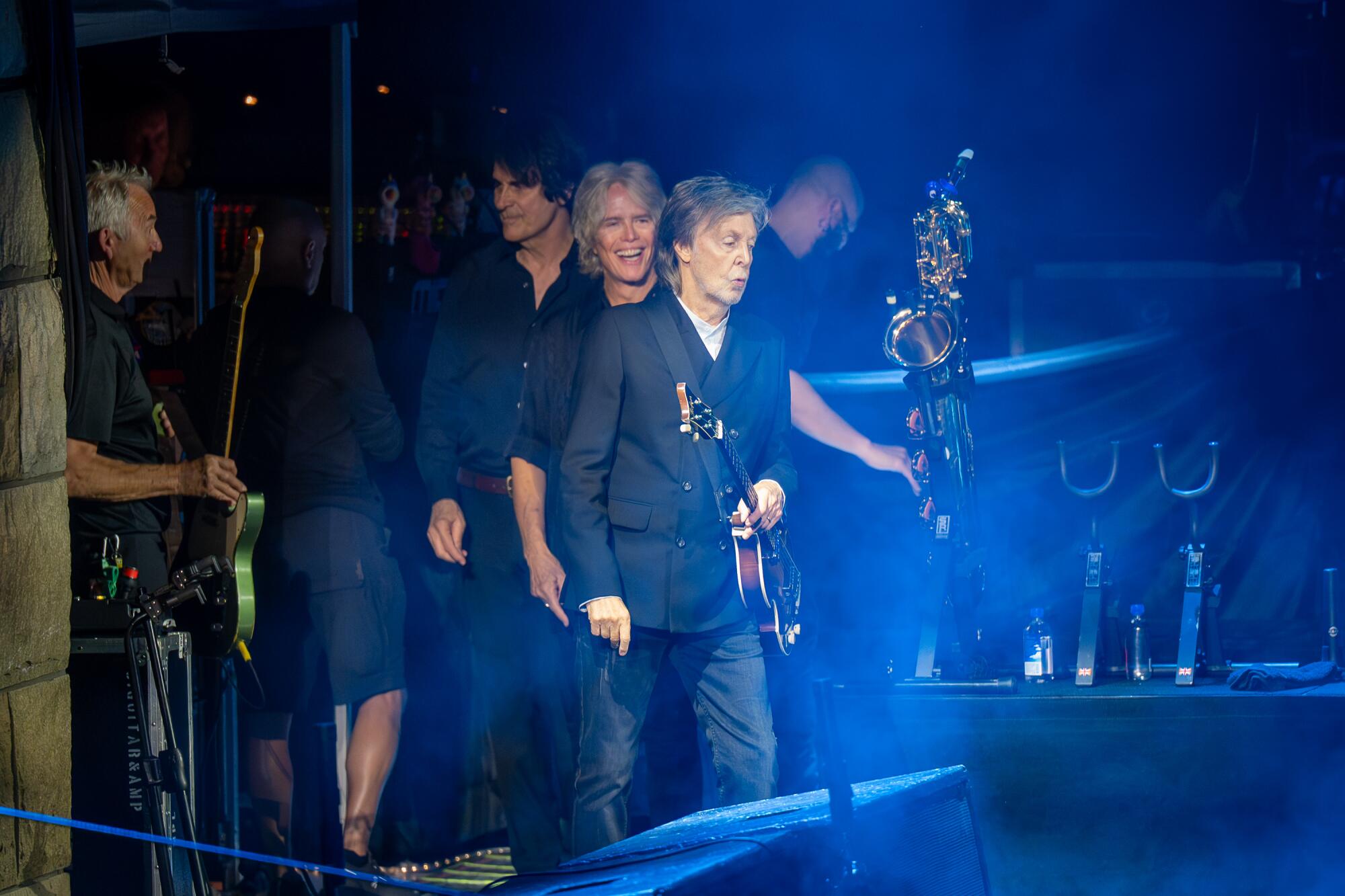
Paul McCartney takes the stage.
(Michael Owen Baker / For The Times)
All that looking back can make it hard for even a devoted fan to take in the legend standing before them in the flesh; instead of overwriting memories with fresh information, the mind steeped in myth can train itself to do the opposite (especially when the owner of that mind has shelled out hundreds of bucks for a concert ticket).
Yet you have to hand it to McCartney, whose face bore a dusting of silvery stubble on Friday: As predetermined as this audience was to have a good time, he was tapped into the energy of a musician making minute-to-minute decisions.
He opened the show with a zesty take on the Beatles’ “Help!,” which experts on the internet say he hadn’t played in concert since 1990, then followed it up with one of his quirkiest solo tunes in the disco-punk “Coming Up,” which he juiced with a bit of Henry Mancini’s “Peter Gunn” theme.
After a flirty “Love Me Do,” he asked the women in the crowd to “gimme a Beatles scream,” then nodded approvingly at the sound. “Imagine trying to play through that,” he added.
“Jet” had a nasty swagger and “I’ve Got a Feeling” a sexy strut; “Live and Let Die,” meanwhile, was just as trashy as you’d hope.
McCartney told moving if familiar stories about meeting Jimi Hendrix and about his mother coming to him in the dream that inspired “Let It Be”; he also told one I’d never heard about screwing up a performance of “Blackbird” — “Lot of changes,” he said of the song’s complicated guitar part — in front of Meryl Streep. Because his wife Nancy was in the house, he said, he played “My Valentine,” a weepy piano ballad anyone but Nancy probably would’ve gladly exchanged for “Junior’s Farm” or “Drive My Car.”
But then what was that choice if not a commitment to the circumstances of the moment?
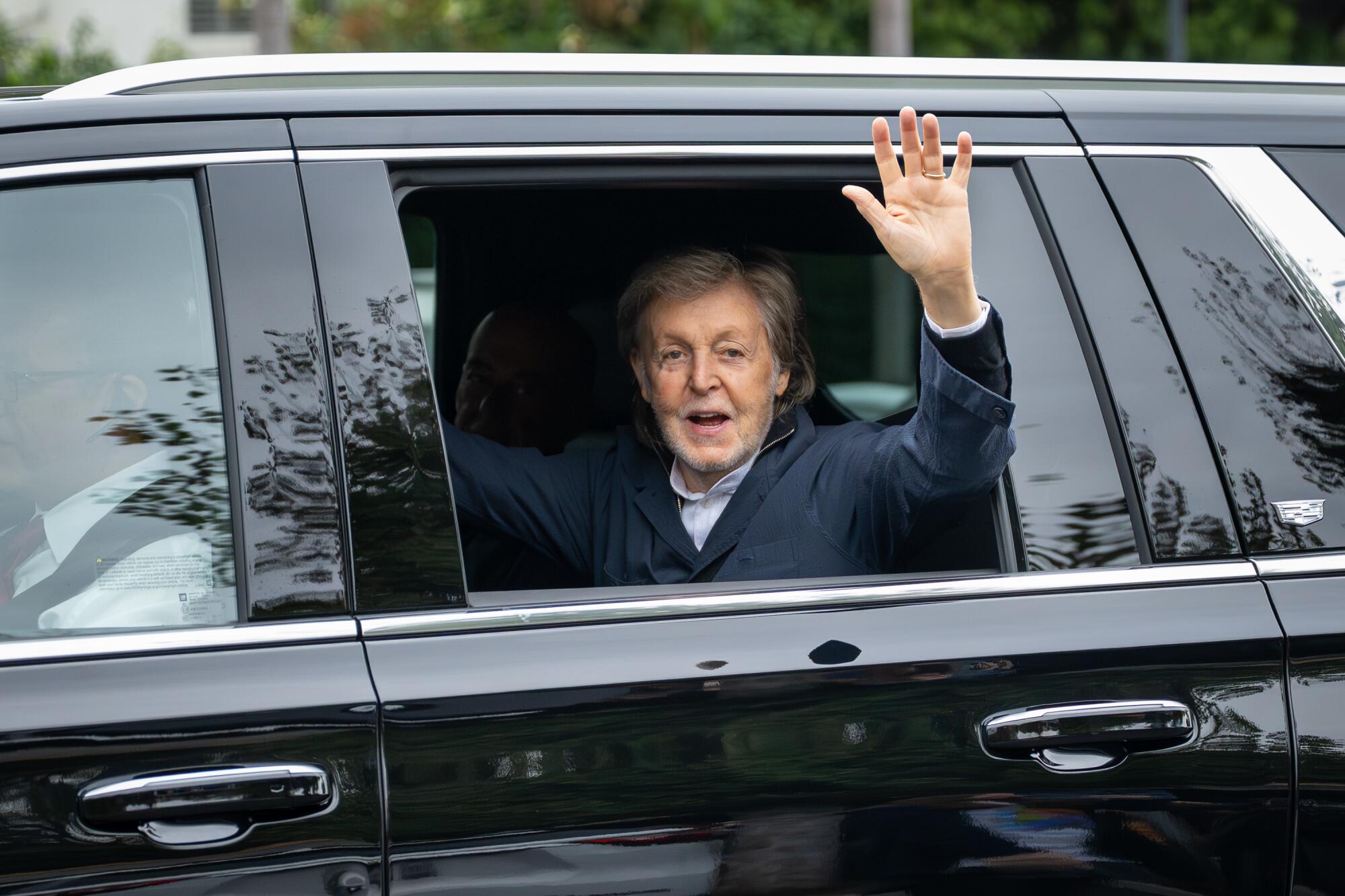
Paul McCartney arrives at the Santa Barbara Bowl.
(Michael Owen Baker / For The Times)
